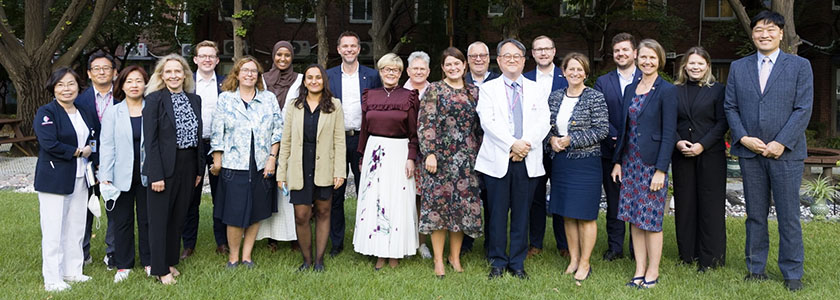
The Standing Committee on Health and Care Services was warmly received at the National Medical Center in Seoul. Photo: National Medical Center.
Health and Care Services Committee in South Korea
The Standing Committee on Health and Care Services travelled to South Korea in mid-September. Norway and South Korea have an extensive history of collaboration within health care, and both nations have much to learn from each other.
“First and foremost, we would like to thank everyone we met for the extremely open, friendly and warm welcome they gave us wherever we went,” said committee chair Tone W. Trøen.
70 years of collaboration
Collaboration in health care between Norway and South Korea has continued for more than 70 years. During the Korean War, Norway sent a mobile army field hospital, a so-called NORMASH, to the country. More than 600 Norwegians – health workers, support staff and military personnel – were involved in the work at the field hospital, which treated over 90,000 people. At the end of the war, Norway, Sweden, Denmark, the UN and Korea joined forces to found the biggest hospital in Asia at that time – the National Medical Center (NMC).
In total, 139 Norwegians worked in the hospital during its first ten years of existence. The committee was given a tour of “The Scandinavian Hall”, a collection of stories connected to the field hospital and the start-up of the existing hospital. During the meetings with the committee’s Korean hosts, immense gratitude was expressed for the work performed by the Scandinavian nations during and after the Korean War. Some of those present were even able to provide their visitors with a few personal stories.
Common challenges
A shortage of health care staff, coordinating services and a rapidly ageing population are among the current and future challenges that Norway faces. It was therefore of particular interest to travel to a country which is trying to tackle similar issues. The birth rate in South Korea is 0.81 per woman, there is an ageing population, and women tend to drop out of the workforce at an early stage in order to look after their children.
The committee had an important and enlightening meeting with the Korean nurses’ union, during which the two nations’ common challenges were compared and discussed frankly. After the meeting, members were shown the simulation centre, which was equipped with lifelike simulators provided by Lærdal Medical, a Norwegian company.
Huge strides in digital health care
South Korea is at the forefront of digital health care. It is one of the few nations to have its own “Google”, which makes it easier to implement public services through a variety of apps. There is a separate unregulated geographical area which has been set aside for digital health care so that legislation does not “get in the way” of research and development. major digital operators, such as Samsung and Naver (Korea’s “Google”), are key contributors in this work.
“The Health and Care Services Committee has been inspired by the visit, learned a great deal, and is hugely grateful for the enjoyable and productive meetings we had in South Korea,” concluded Tone W. Trøen.
Last updated: 29.09.2022 11:54